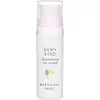What's inside
What's inside
 Key Ingredients
Key Ingredients

 Benefits
Benefits

 Concerns
Concerns

No concerns
 Ingredients Side-by-side
Ingredients Side-by-side

Water
Skin ConditioningGlycerin
HumectantPropanediol
SolventHydroxyethylcellulose
Emulsion StabilisingCaprae Lac
Skin ConditioningColostrum
Skin ConditioningBifida Ferment Lysate
Skin ConditioningLactose
HumectantMilk Protein
Skin ConditioningSodium Hyaluronate
HumectantDarutoside
Skin ConditioningCucumis Sativus Fruit Extract
EmollientAloe Barbadensis Leaf Juice
Skin ConditioningChamomilla Recutita Flower Extract
MaskingEryngium Alpinum Flower Extract
Skin ConditioningAlbizia Julibrissin Bark Extract
MaskingHoney
HumectantLinum Usitatissimum Seed Extract
PerfumingSymphytum Officinale Leaf Extract
Skin ConditioningWhey Protein
Skin ConditioningSodium Levulinate
Skin ConditioningSodium Anisate
AntimicrobialCitric Acid
BufferingPanthenol
Skin ConditioningSodium Phytate
C10-18 Triglycerides
EmollientLecithin
EmollientPotassium Sorbate
PreservativeSodium Benzoate
MaskingWater, Glycerin, Propanediol, Hydroxyethylcellulose, Caprae Lac, Colostrum, Bifida Ferment Lysate, Lactose, Milk Protein, Sodium Hyaluronate, Darutoside, Cucumis Sativus Fruit Extract, Aloe Barbadensis Leaf Juice, Chamomilla Recutita Flower Extract, Eryngium Alpinum Flower Extract, Albizia Julibrissin Bark Extract, Honey, Linum Usitatissimum Seed Extract, Symphytum Officinale Leaf Extract, Whey Protein, Sodium Levulinate, Sodium Anisate, Citric Acid, Panthenol, Sodium Phytate, C10-18 Triglycerides, Lecithin, Potassium Sorbate, Sodium Benzoate
Water
Skin ConditioningCaprylic/Capric Triglyceride
MaskingGlycerin
HumectantCoco-Caprylate/Caprate
EmollientPropanediol
SolventTridecyl Trimellitate
EmollientHelianthus Annuus Seed Oil
EmollientGlyceryl Stearate Citrate
EmollientC12-16 Alcohols
EmollientSqualane
EmollientCaprae Lac
Skin ConditioningGanoderma Lucidum Extract
Skin ProtectingTremella Fuciformis Sporocarp Extract
AntioxidantKojic Acid
AntioxidantHericium Erinaceus/Lactobacillus/Leuconostoc/Artemisia Capillaris Leaf/Stem Ferment Filtrate
AntioxidantAcetyl Hexapeptide-8
HumectantHydrogenated Lecithin
EmulsifyingPolyglyceryl-3 Stearate
Emulsifying1,2-Hexanediol
Skin ConditioningTriheptanoin
Skin ConditioningPullulan
Palmitic Acid
EmollientCetearyl Alcohol
EmollientGlyceryl Citrate/Lactate/Linoleate/Oleate
EmulsifyingC9-12 Alkane
SolventDilinoleic Acid/Butanediol Copolymer
Sclerotium Gum
Emulsion StabilisingCaprylhydroxamic Acid
Xanthan Gum
EmulsifyingSodium Benzoate
MaskingCastor Oil/Ipdi Copolymer
Tocopherol
AntioxidantWater, Caprylic/Capric Triglyceride, Glycerin, Coco-Caprylate/Caprate, Propanediol, Tridecyl Trimellitate, Helianthus Annuus Seed Oil, Glyceryl Stearate Citrate, C12-16 Alcohols, Squalane, Caprae Lac, Ganoderma Lucidum Extract, Tremella Fuciformis Sporocarp Extract, Kojic Acid, Hericium Erinaceus/Lactobacillus/Leuconostoc/Artemisia Capillaris Leaf/Stem Ferment Filtrate, Acetyl Hexapeptide-8, Hydrogenated Lecithin, Polyglyceryl-3 Stearate, 1,2-Hexanediol, Triheptanoin, Pullulan, Palmitic Acid, Cetearyl Alcohol, Glyceryl Citrate/Lactate/Linoleate/Oleate, C9-12 Alkane, Dilinoleic Acid/Butanediol Copolymer, Sclerotium Gum, Caprylhydroxamic Acid, Xanthan Gum, Sodium Benzoate, Castor Oil/Ipdi Copolymer, Tocopherol
Ingredients Explained
These ingredients are found in both products.
Ingredients higher up in an ingredient list are typically present in a larger amount.
We don't have a description for Caprae Lac yet.
Glycerin is already naturally found in your skin. It helps moisturize and protect your skin.
A study from 2016 found glycerin to be more effective as a humectant than AHAs and hyaluronic acid.
As a humectant, it helps the skin stay hydrated by pulling moisture to your skin. The low molecular weight of glycerin allows it to pull moisture into the deeper layers of your skin.
Hydrated skin improves your skin barrier; Your skin barrier helps protect against irritants and bacteria.
Glycerin has also been found to have antimicrobial and antiviral properties. Due to these properties, glycerin is often used in wound and burn treatments.
In cosmetics, glycerin is usually derived from plants such as soybean or palm. However, it can also be sourced from animals, such as tallow or animal fat.
This ingredient is organic, colorless, odorless, and non-toxic.
Glycerin is the name for this ingredient in American English. British English uses Glycerol/Glycerine.
Learn more about GlycerinPropanediol is an all-star ingredient. It softens, hydrates, and smooths the skin.
It’s often used to:
Propanediol is not likely to cause sensitivity and considered safe to use. It is derived from corn or petroleum with a clear color and no scent.
Learn more about PropanediolSodium Benzoate is a preservative. It's used in both cosmetic and food products to inhibit the growth of mold and bacteria. It is typically produced synthetically.
Both the US FDA and EU Health Committee have approved the use of sodium benzoate. In the US, levels of 0.1% (of the total product) are allowed.
Sodium benzoate works as a preservative by inhibiting the growth of bacteria inside of cells. It prevents the cell from fermenting a type of sugar using an enzyme called phosphofructokinase.
It is the salt of benzoic acid. Foods containing sodium benzoate include soda, salad dressings, condiments, fruit juices, wines, and snack foods.
Studies for using ascorbic acid and sodium benzoate in cosmetics are lacking, especially in skincare routines with multiple steps.
We always recommend speaking with a professional, such as a dermatologist, if you have any concerns.
Learn more about Sodium BenzoateWater. It's the most common cosmetic ingredient of all. You'll usually see it at the top of ingredient lists, meaning that it makes up the largest part of the product.
So why is it so popular? Water most often acts as a solvent - this means that it helps dissolve other ingredients into the formulation.
You'll also recognize water as that liquid we all need to stay alive. If you see this, drink a glass of water. Stay hydrated!
Learn more about Water